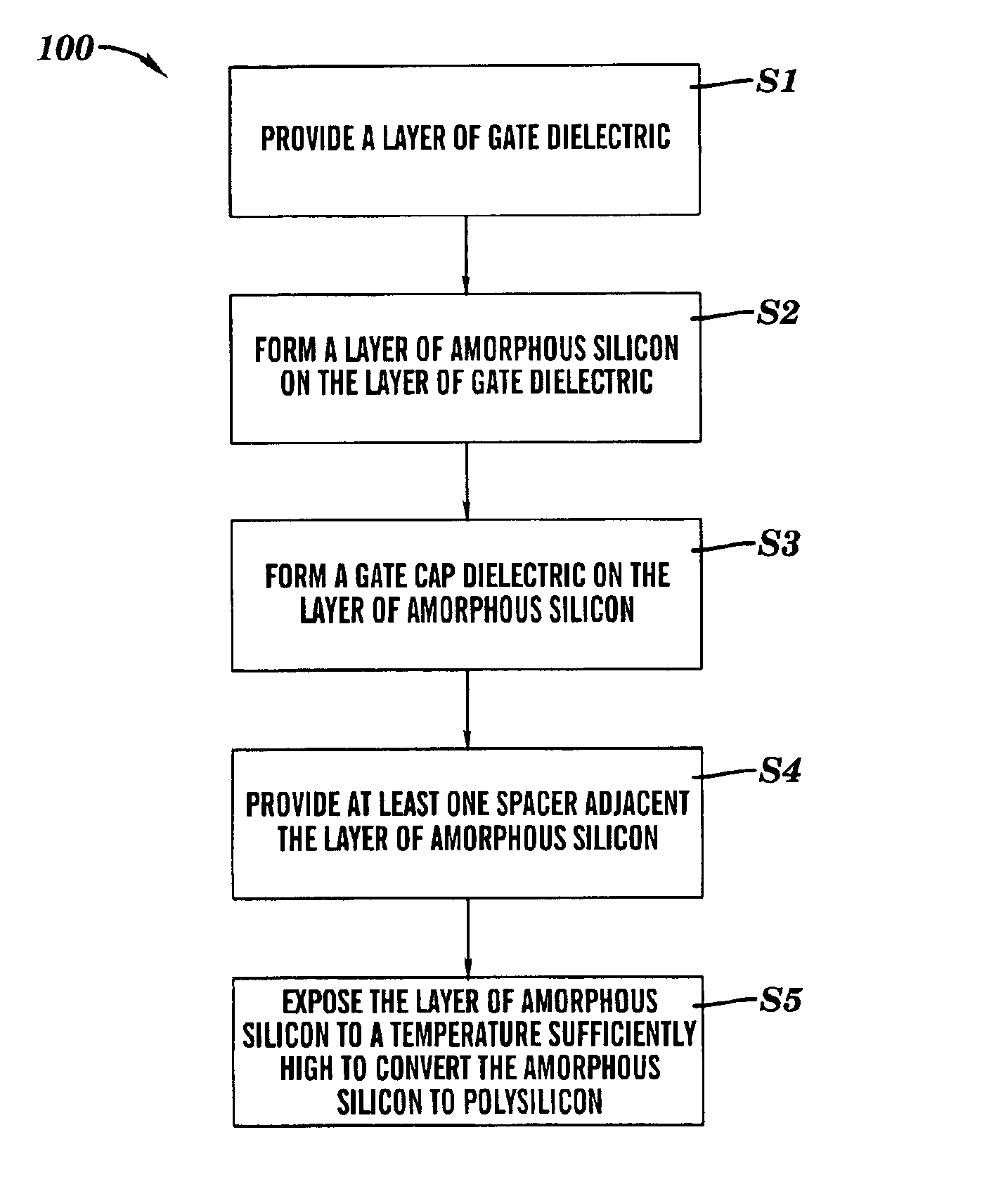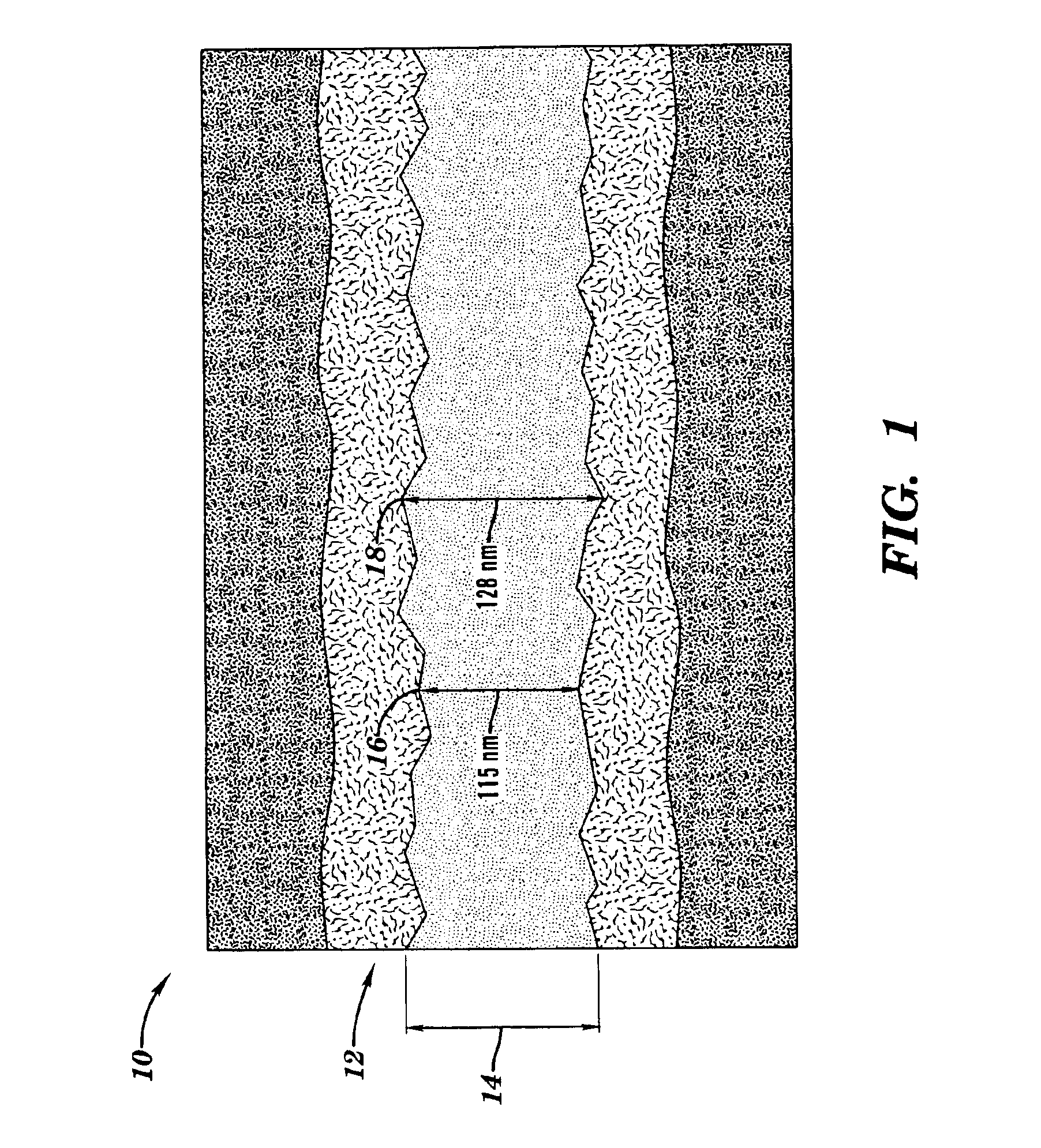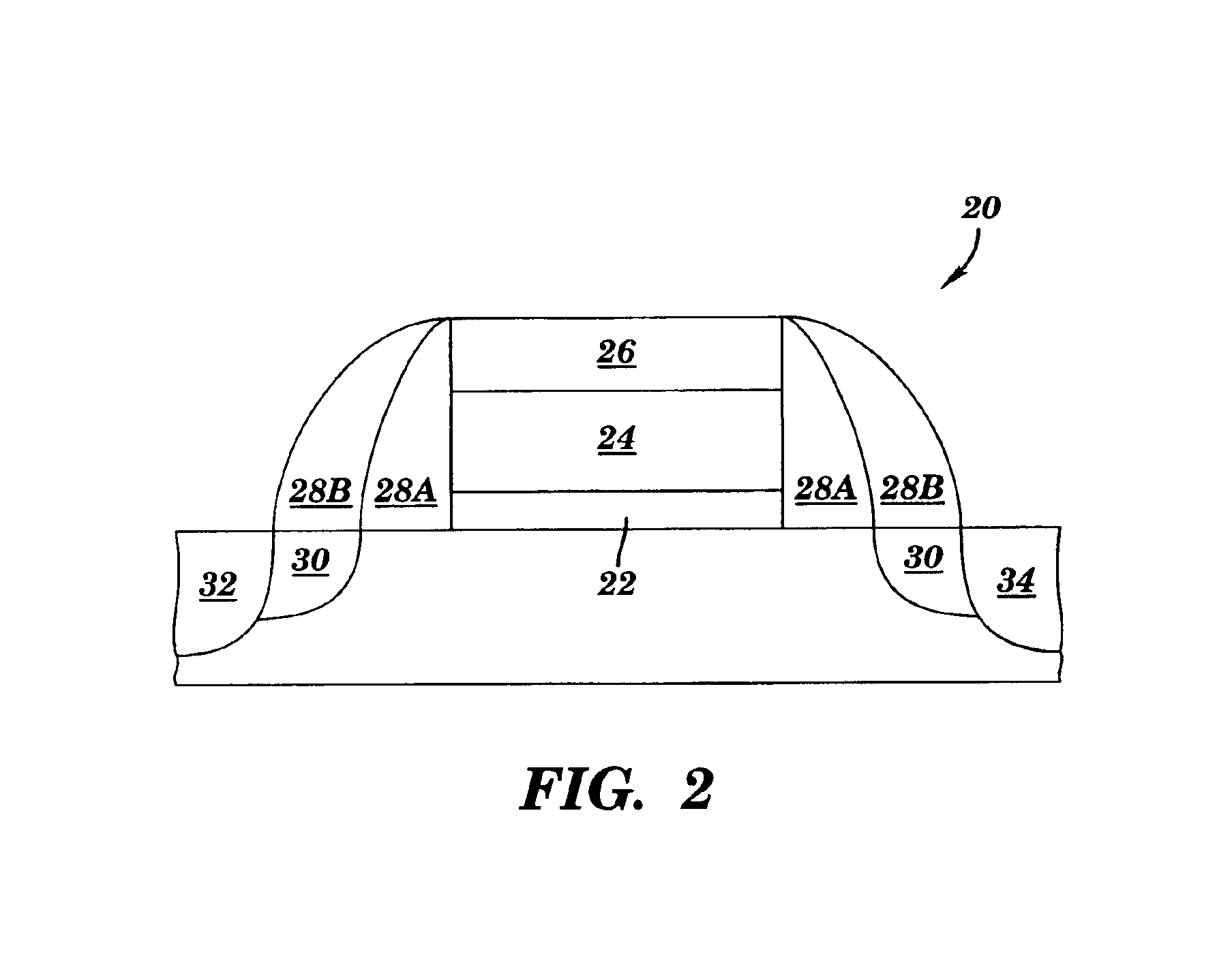Method for forming an electronic device
a technology of electronic devices and etching, applied in the direction of semiconductor devices, basic electric elements, electrical equipment, etc., can solve the problems of polysilicon etching, gate line roughness, gate length variation, etc., to reduce the variation in gate length, and reduce the line edge roughness
- Summary
- Abstract
- Description
- Claims
- Application Information
AI Technical Summary
Benefits of technology
Problems solved by technology
Method used
Image
Examples
Embodiment Construction
[0018]As indicated above, the present invention provides a method for forming an electronic device such as a FET device. Specifically, under the present invention, a layer of amorphous silicon is formed over a layer of gate dielectric. After the layer of amorphous silicon is formed, a gate cap dielectric is deposited. Implantation of dopants is then performed as needed. Thereafter, gate lines are patterned lithographically and the gate cap dielectric, amorphous silicon, and gate dielectric are etched to form the gate lines. It should be noted that the state of silicon is amorphous at the time of etching to minimize the line edge roughness. The absence of grain boundaries, which would be present in polysilicon, reduces the line edge roughness at the time of etching. Further, the amorphous silicon is confined on the top by gate cap dielectric and on the bottom by gate dielectric. The sides of amorphous silicon are then confined by at least one spacer, which is deposited under a low te...
PUM
| Property | Measurement | Unit |
|---|---|---|
| temperature | aaaaa | aaaaa |
| temperature | aaaaa | aaaaa |
| gate length | aaaaa | aaaaa |
Abstract
Description
Claims
Application Information
 Login to View More
Login to View More - R&D
- Intellectual Property
- Life Sciences
- Materials
- Tech Scout
- Unparalleled Data Quality
- Higher Quality Content
- 60% Fewer Hallucinations
Browse by: Latest US Patents, China's latest patents, Technical Efficacy Thesaurus, Application Domain, Technology Topic, Popular Technical Reports.
© 2025 PatSnap. All rights reserved.Legal|Privacy policy|Modern Slavery Act Transparency Statement|Sitemap|About US| Contact US: help@patsnap.com



